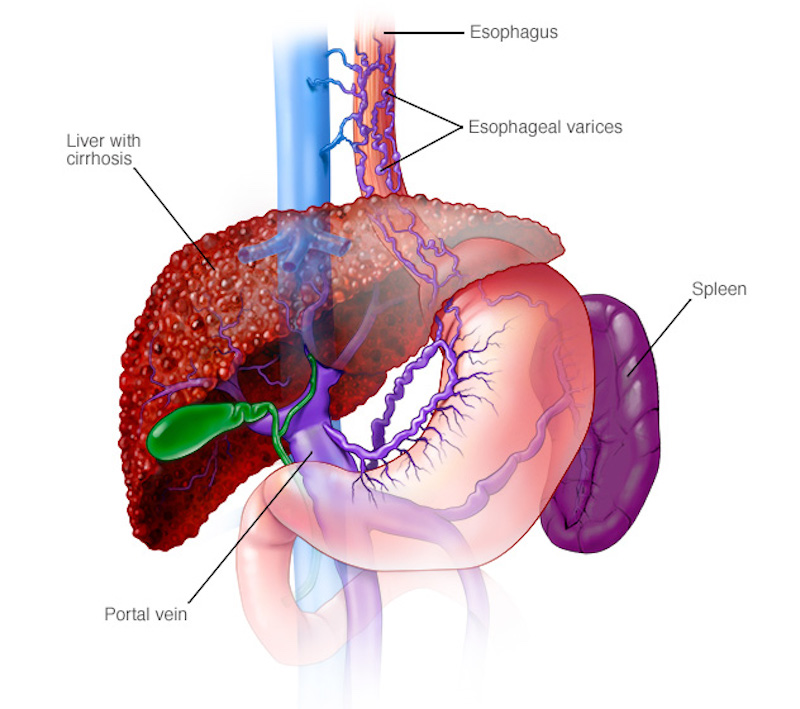Bleeding Esophageal Varices

The esophagus is the tube that connects the throat to the top part of the stomach. Varices are inflamed veins that may be found in the esophagus that can break open and bleed. The most common cause of esophageal varices is scarring, cirrhosis, of the liver. When the liver is scarred, the blood flow to the liver becomes reduced. This results in an increased blood flow through the veins in the esophagus, which causes the veins to swell. Heavy bleeding can occur if the veins break open. Varices can also occur in the upper part of the stomach.
When varices break open and bleed, the resultant blood in the stool will appear dark black and tarry like. Other symptoms of esophageal varices include lightheaded ness, paleness, vomiting and vomiting blood.
Esophageal varices and bleeding are a serious complication of liver disease and outcomes of the condition are poor. Treatment usually involves stopping the bleed and preventing any subsequent infections. If the underlying liver disease is treated, outcomes are better. Go to an emergency room if you ever vomit blood or have tarry black stools.
More from Things Health
-
Visual Signs of Poor Health That You Probably Ignore (But Shouldn't)
We often think that being diagnosed with an illness such as diabetes, heart disease, stroke or cancer as something that happens out of the blue.…
-
10 Serious Conditions That Rashes And Hives Can Indicate
Hives, also known as Urticaria in medical terms, is a frequent symptom that is experienced by people with allergies to various medication, foods, and viral…
-
Symptoms Of An Ulcer
A peptic ulcer is an open sore in the top digestion tract. Both primary kinds of peptic ulcers, a gastric ulcer, which forms in the…
-
Treat Constipation At Home With These Common Foods
Constipation is a condition where there is difficulty in emptying the bowels, in most cases, due to hardened feces. In most cases, constipation is related…
-
Liver Disease And Chronic Fatigue
50 percent of the sufferers with an underlying liver condition show no symptoms of the disease. The symptoms are actually very regular, as for instance…






